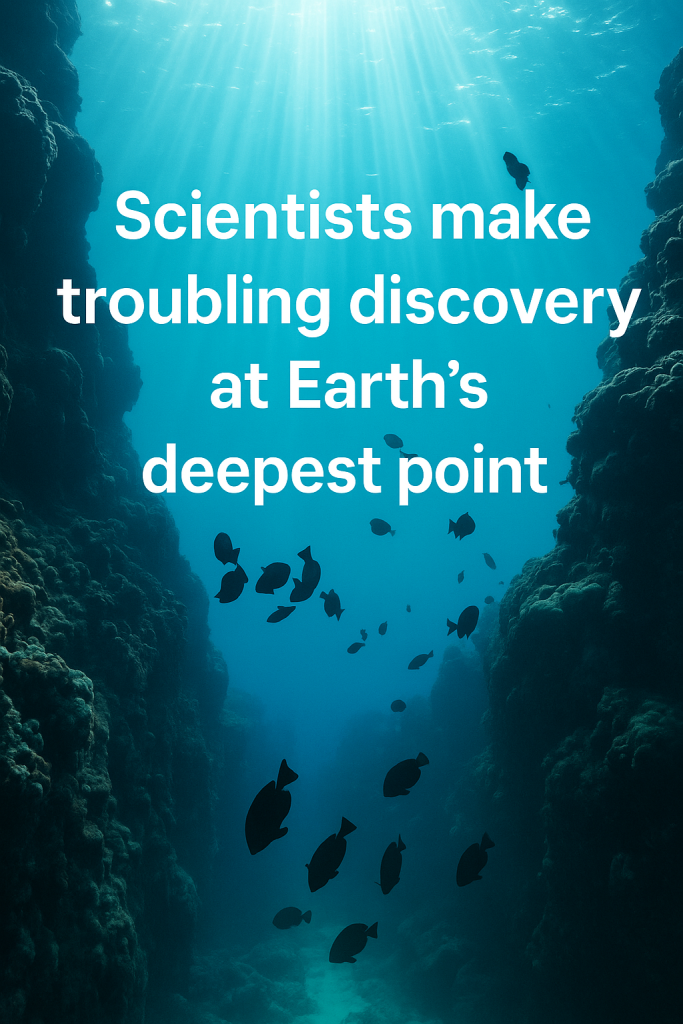In a groundbreaking and unsettling discovery, scientists exploring the Challenger Deep—the deepest known point on Earth, located within the Mariana Trench—have identified disturbing signs of environmental degradation that challenge previous assumptions about this remote and extreme ecosystem. Recent research conducted in 2024 reveals that even the planet’s most inaccessible depths are not immune to the impacts of human activity.
The Challenger Deep reaches nearly 11,000 meters (approximately 36,000 feet) beneath the ocean’s surface, representing an environment once believed to be virtually untouched by pollution or climate change. However, an international team of marine scientists undertaking deep-sea expeditions in June 2024 has brought to light worrying evidence that microplastics, chemical contaminants, and disturbing shifts in native microbial populations are all present within the sediment and water of the trench.
“We thought these areas were refuges, pristine and untouched,” said one of the lead researchers. “Our latest findings indicate that human influence extends to the very bottom of the ocean, threatening ecosystems we barely understand.”
The study combined advanced underwater vehicles equipped with pressure-resistant samplers and DNA sequencing technology to analyze both physical debris and living organisms inhabiting the trench. Scientists were shocked to find microplastic particles not only suspended in the water column but embedded within the sediment, suggesting that oceanic currents are carrying pollutants to even the planet’s most isolated environments.
More concerning still, chemical analyses detected trace amounts of persistent organic pollutants (POPs) and heavy metals — substances linked to industrial pollution — concentrated at depths where conditions were previously thought to limit the survival of such contaminants. These toxins pose a risk to the delicate microbial and invertebrate communities that form the foundation of the trench’s deep-sea ecosystem.
Perhaps the most alarming discovery involves shifts in the microbial life forms collected from sediment samples. Genetic sequencing revealed a notable reduction in the diversity of native microorganisms and a rise in bacteria known to degrade plastics and other pollutants. While this might initially appear as nature’s attempt to adapt, scientists warn that such changes could disrupt the overall food web and biogeochemical cycles within the trench, with unknown cascading effects.
Experts emphasize that the findings from the Challenger Deep serve as a wake-up call. The idea that extreme depths of the ocean could act as a safeguard against pollution is no longer tenable. Instead, the damage wrought by global plastic waste, industrial runoff, and climate-driven changes to ocean chemistry is spreading farther and deeper than anticipated.
Environmental advocates echo concerns that without sweeping global efforts to reduce pollution, deepen scientific understanding, and protect vulnerable aquatic habitats, humanity could irreparably alter Earth’s final frontiers. The deep ocean has long been a symbol of mystery and resilience, but these new findings underscore its vulnerability and the pressing urgency of stewardship at all levels.
As oceanographers prepare for future missions, harnessing enhanced technology to monitor and perhaps mitigate these impacts is vital. In the meantime, the Challenger Deep’s troubling revelations reinforce a critical truth: no place on Earth is truly beyond the reach of human influence.



